A day in Burgundy: 2011 looks to be a good vintage – plus notes on 2010
September 1, 2011
You can read my report in decanter.com but here more information and tasting notes on Burgundy 2010s after the malolactics were done. And some other vintages, including a trio of brilliant Corton Charlemagnes at Bonneau du Martray (2009-2008-2007). To get to the notes immediately, just click on each property: Clos des Lambrays / Mugneret-Gibourg / Domaine Louis Jadot / Bonneau du Martray
I was in Burgundy earlier in June 2011 – see copious notes HERE – and then again on 29 August, just when harvesters started their work.
Birds were picking at the grapes at Clos des Lambrays, a somewhat underrated grand cru where director Thierry Brouhin has helped make this property great: no more pesticides, hand picking, sorting tables et al. Humbly, he notes that the wine has gotten better in the last 10 years as the vines have aged.
He likes to pick relatively early, especially compared to neighbor Clos de Tart, and the wine usually retains a superb freshness and elegance. “It is time to harvest,” he remarked ruefully looking at the birds.
Somewhat of a self proclaimed pessimist, he said that 2011 could have been a great year, with a fine early flowering and dry weather. But then the rains fell from mid July through most of August. Not as much as in 2007, but enough (about 130mm, three times as much as normal) to bring about rot. “We will select carefully,” he said. “Our sorting tables will be put to work,” which means that about 20% of the production will be lost. But when we tasted the grapes, many were very juicy and fine, with browning pips (a good sign for phenolic maturity) and rather thick skins.
“Many of us did not green harvest,” he added, because “we thought we did not have to”… Still, after going through the lovely vineyard – a superb exposition and excellent slope – he said that it could be better than he thinks.
Clos des Lambrays 2010. Thierry selected wines from various barrels. Oh my goodness what sheer elegance and finesse. I fell in immediate love with the raspberry and red cherry flavors and aromas, then a high intensity of flavor on the mid palate with mineral and licorice notes as well. A smooth palate feel and a lingering finish. This seems very successful and richer than the more acid toned 2008 (and especially the weaker 2007) tasted last year.
Clos des Lambrays 2009. The first bottle had been opened almost three days before and it was a bit tired. In any case, bottling was recent. So even the second bottle – just opened a half bottle – was not as impressive as when tasted last year from cask. But it was darn good and I could sense the tannic power in this wine. It will need time to come together, and I agree with John Gilman’s comment to wait about 10 years and “watch the fireworks”. Glad I bought nine bottles!
Domaine Jacques Frederic Mugnier
I then visited Domaine Jacques Mugnier in Chambolle Musigny – where I had some wine to pick up – and took a call from owner Frederic Mugnier while he was examining his monopol vineyard Clos de la Marechale in Nuits St Georges. He was not worried about the rains as much, saying that ripeness has been achieved. “The grapes are looking good, we have phenolic ripeness, and even if it rains during the harvest – which he was going to start on Thursday 1 September – it would not matter much.
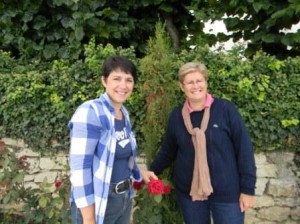
Marie Andree and Marie Christine Mugneret: the amazingly aromatic roses near the vineyard remind me of their Echezeaux...
Next stop: a visit to Marie Andree and Marie Christine Mugnier of the superb Domaine Mugneret-Gibourg, where I also picked up some 2009s, after having tasted them in June. Their vineyard looked very good. They had green harvested. And de-leafed. It was such a pleasure to visit this fine property again – and to taste the 2010s after malolactic fermentation. All I can say is that their 2010s are overall very fine. Of a different nature compared to their 2009s – not as dark, fresher perhaps, with a stress on energy as opposed to the depth of the 2009s. But there is also depth here, too.
Bourgogne 2010. As I write this, I am sipping on the 2009 vintage which I purchased for €15. It is one of the best basic Burgs I know. The 2009 is deep with dark fruit notions. The 2010 from barrel has a pure fresh nose, more crackly on the palate, exuding strawberries (while the 2009 is more dark cherry and plum). A sample taken from a mix of one new oak and one old oak barrel, showing lovely energy and a very fine wine.
Nuits St Georges 1er Cru Les Chaignots 2010. This shows fine sap, but there is a slightly sour feel, with acidity on the palate… Not sure.
Chambolle Musigny 1er Cru Les Feusselottes 2010. This will be a final blend coming from 40% new oak, but the sample I tried came from a new oak barrel. Cherry red aspect, much finesse, and freshness, with superb energy and much smoother and more elegant than the previous wine. Wow!
Echezeaux 2010. Violets on the nose. Deeper and more complex. This wines comes from two plots, the Les Quartiers de Nuits, near the northern part of the Clos Vougeot appellation and Les Rouges du Bas – a more famous plot – which has more gravely soil and a windier microclimate. Also the vines average 60 years of age. One senses the breed here. I am so happy to have purchased some bottles of the 2009 – and will follow suit with the 2010.
Gevrey Chambertin 1er Cru young vines – this is a wine made from the 10 year old wines in the Ruchottes grand cru vineyard. Much freshness and a virile Gevrey character.
Ruchottes Chambertin Grand Cru 2010. More intensity and focus here. Rich yet powerful. A serious wine, similar to the experience I had with the 2009. I am still more seduced by Echezeaux…
Clos Vougeot 2010. This seemed supremely closed down. I got a note of reduction although Marie Andree said it was just very closed. One could sense the breed and the power – it explodes on the mid palate but seems to hit a wall on the finish. A very long distance runner. Do not touch for another 10 years or so.
Always a great pleasure to visit Louis Jadot with director Jacques Lardiere, a legendary winemaker in Burgundy, who after some 40 years with Louis Jadot, will retire next year. He speaks poetically about wine, especially enjoying the remark about a wine’s “memory”… For 2011, he agrees with a general comparison to 2007 but emphasized that there was less rain this year and that rot was not as much a problem. “June was better this year,” he said. Nevertheless, even though the raw materials were good from the start, July and August did complicate matters, he added.
After walking in the cellar area, where we saw various sized wood tanks to accomodate varying parcel sizes, we walked out to the comfortably large reception area – empty on Monday 29 August – but the harvesting was set to start on Tuesday, Lardiere said.
He emphasized that picking too early is dangerous – he likes to pick later. But even he said that the grapes were ripe enough already. The threat of rain in later days means that they would stop picking, but then resume. For him 1997, is a good example of needing to wait out the rains. “We waited so that the vines would dry enough, we lost a lot of yields, but it paid off and our 1997s were successful.”
We then went into the barrel aging rooms one floor below, and put on our sweaters… It was a generally positive experience to taste the 2010s here, although I do believe that the 2009 vintage is more successful at Louis Jadot, at least based on this and previous tastings of the 2009 vintage.
The notes – all 2010s
WHITES
Malolactics done, although Lardiere preferred to preserve some malic acid in many of the whites. Unlike many others, he feels that 2010 was not that high in acidity. Interesting…
Louis Jadot Fixin Blanc: Lovely energy and good flavors, there is a fine spirit to this wine, refreshing. Nothing complex, but the price is absolutely right. A wine to seek out!
Pernand Vergelesses Clos de la Croix de Pierre. Here is a thicker, more vanilla aspect, which I liked less. A bit flat, to me.
Beaune Bressandes 1er Cru. Fine smoky aspect, a tad sweet like, but good overall, on the palate, the acidity is OK. Overall, a simple aspect.
Meursault Les Genevrieres. Here we sense the breed, with apple notes on the nose and palate, a lovely and subtle aspect, full bodied, if a bit of sweetness.
Chassagne Montrachet Morgeot 1er Cru. Here a bit less volume, but I prefer the more mineral aspect, a stone like flavor that leaves you wanting to taste more.
Puligny Montrachet Les Folatieres 1er Cru. Now we are talking. A wax like nose, then pear. Very juicy on the palate, with intensity of flavor. Lingering on the palate after spitting. A fine success.
Chevalier Montrachet Demoisselles Grand Cru. Here we have that smoky aspect from Bressandes earlier but more complex and more stone on the palate. A very fine grand cru.
Batard Montrachet Grand Cru. The nose is expressive in its butter, pepper and pear notes, what pear! The palate follows through perfectly, with juiciness, richness and yet very suave. Includes about 8% malic acid. Aged in 40% new oak. Excellent wine.
Corton Charlemagne Grand Cru. My, my. What freshness! While Batard has a certain baritone like seriousness, this wine impresses with contralto… Fruit filled yet with licorice and minerality. Another wine that would quench your fine wine thirst, leaving you yearning for more. Seek this out.
REDS
Echezeaux Grand Cru. A good one here, but not as complex as the Echezeaux at Mugneret-Gibourg. It is pleasing. The barrel aging should fill it out a bit. Medium intensity and palate presence.
Grands Echezeaux. Much better. More intense, it exudes elegance and style – and substance. I wonder if it suffers from just a slight lack of volume on the mid palate? But barrel aging should settle things.
Bonnes Mares GC. Aromatically fabulous, with high intensity on the palate. Since 2006, this wine is only made from Chambolle Bonnes Mares grapes. A wine to seek.
Musigny. Well, even more intense. Can I double underline? Ah, yes, the price… There is great aromatic presence, followed through on a lingering palate.
Vosne Romanee Les Suchots 1er Cru. It was strange to descend from the heights of the grands crus but here we go. This was OK. Their was an iron, almost protein aspect that bugged me though.
Gevrey Chambertin Clos St Jacques 1er Cru. Now this wine I bought in 2009. The 2010 barrel sample was not as impressive, but very good. A certain masculine quality, not austere, but somewhat imposing, with good ripeness and high palate presence. Ripe fruit. Fine.
Chambolle Musigny Les Baudes 1er Cru. The nose is far more expressive than the above, lovely, fruit filled and even floral. The palate starts out bright and fine, echoing the initial promise of the aromatics, but then it tails off a bit – it has a weak finish.
It was great to finally meet Jean Charles Le Bault de la Morinière at Bonneau du Martray – the largest owner of the Corton Charlemagne vineyard with 11 hectares of the choicest vine locations. He was not worried about the rot of 2011, which did not affect the white grapes, he said with confidence. Could 2011 prove to be a better year for whites? We shall see. The domain in Pernand Vergelesses exists since the time of the great King Charlemagne, since the 8th century. It has belonged to the de la Morinière family since 1838.
We spoke about premature oxidation and he said that his wine had suffered from cases of it, particularly with the 1996 and 1999 vintages. He thinks the issue stems from over production of bad corks. Since 2002, he has checked the quality of his wine in a lab, to make sure that it is stable. When we tasted the 2007, 2008 and 2009 vintages, they were all impressive, and very straw like, youthful in color.
Corton Charlemagne 2007. Well you see red correctly. All three wines were at least very fine. The 2007 at first annoyed me with a hint of annoying pineapple, but that blew off quickly, the bottle just opened, the wine showing a very youthful straw color. There is licorice, white pepper, and the palate exhibits much juiciness, but also a certain youthful tightness. Coming from vines aged 46 years average. Going back to this, I was impressed with its polished aspect, and a certain orange rind freshness. But also – as the glass was emptied – a garden like freshness on the final note. Very fine.
Corton Charlemagne 2008. I have to give a slight edge to the 2008. It seemed less honeyed, more herbal, more garden like. With notable spiciness, combined with a subtle and pleasing charcoal and mineral flavor on the palate, which seems more precise. The wine is also much tighter than the 2007, but does it show more promise for future aging? There is acidity, not bracing or sharp, but present – like a backbone.
Corton Charlemagne 2009. Here we have a wine that resembles perhaps the 2007 more. Once again, we are enticed by aromas and flavors akin to a floral garden in the growing springtime. There is vivacity to this wine, but perhaps with a bit more thickness than the 2008. But again, a subtle wine. It is sneaky and escapes easy definition. I am tempted to underline all these… but I think the 2008 stands out.

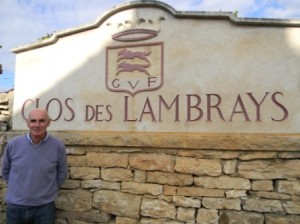

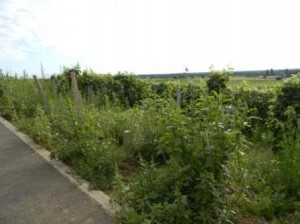
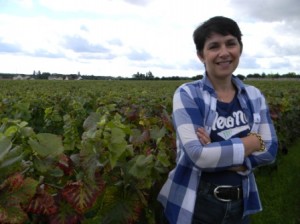
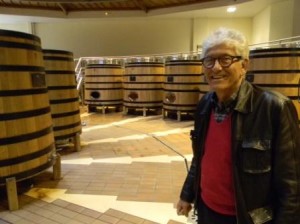
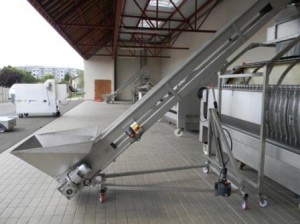
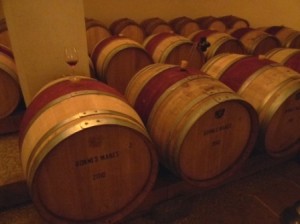
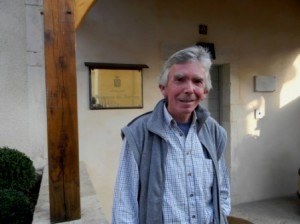
[…] 2011 Sonoma Harvest Update Burgundy Harvest Begins Weinjahrgang 2011 im Burgund: Gut, aber nicht großartig Una Vendemmia Ferragostana per l’Emilia Romagna Vendemmia, aiutanti irregolari dalla Macedonia […]
Hi there! I could have sworn I’ve been to this website before but after browsing through some of the post I realized it’s new to me. Anyways, I’m definitely glad I found it and I’ll be bookmarking and checking back often!
Terrific post however I was wondering if you could write a litte more on this topic? I’d be very grateful if you could elaborate a little bit more. Kudos!
[…] You can read about that HERE. […]